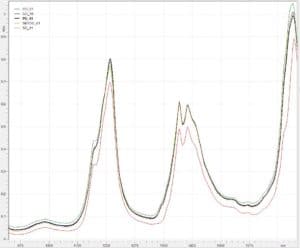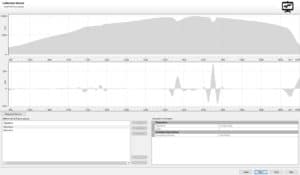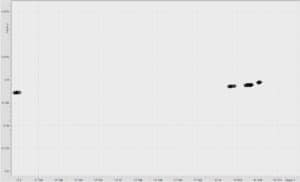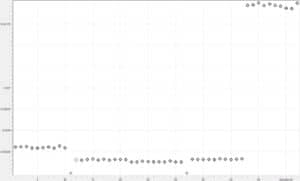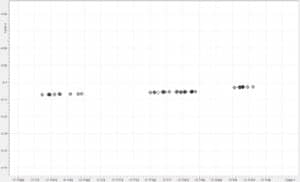Model for the Identification of Edible Oils
Background/Applications:
Absorption measurements can be used to determine the properties of various samples, such as concentrations of chemicals and the quality of plastics. Not only can absorption spectra be used to identify the characteristics of many types of samples, but it can also be used to characterize the unique spectra of each sample to generate a chemometric model. NIR spectroscopy is leading the way for the future of agriculture and food production for both qualitative and quantitative measurements.
Description of System:

Figure 1: The setup of the experiment
A halogen light source is ideal for absorption measurements because of its power and good output in the NIR range, which is the wavelength range many researchers use in agriculture to study and characterize consumables, such as oils. This aids in revealing properties not observable with the naked eye. The halogen light source used in this testing is the AvaLight-HAL-S-Mini. From visible light to near-infrared, that’s where the AvaLight-HAL-S-Mini works best. It’s a compact, stabilized halogen light source, with adjustable focusing of the fiber connection, maximizing output power at the desired wavelength. The light source also has adjustable output power to provide extra power or longer bulb life. The light source is connected via SMA termination directly to a direct attach cuvette holder (CUV-DA). All CUV-DA cuvette holders feature two 90-degree and one 180-degree threads that allow the COL-UV/VIS collimating lens to be connected for absorbance or fluorescence setups. Each of the CUV-DA series cuvette holders includes two SiO2 aluminum mirrors to further enhance fluorescence signals. These are mounted at 90 degrees to the excitation source and emission output. The CUV-DA has a 5 mm wide filter slot. The opposite end of the CUV-DA is attached to a 600um fiber, which will feed the absorption spectra directly to the latest addition to our CompactLine: the AvaSpec-Mini-NIR.
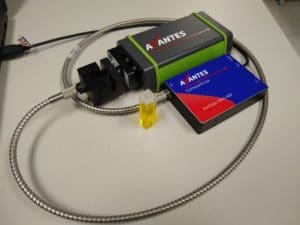
Figure 2: Instrument Setup for Data Collection
The AvaSpec-Mini-NIR is a compact near-infrared spectrometer, based on a combination of our popular AvaSpec-NIR256-1.7 and Mini-series. This NIR spectrometer might not be as sensitive as our bigger NIR spectrometers, but this loss in sensitivity is greatly compensated by its size and robustness. Like our other CompactLine spectrometers, this device is only the size of a deck of cards and USB powered, which makes it easy to integrate into other devices, including but not limited to OEM handheld applications. This versatile miniature NIR spectrometer is well suited for various applications, including food analysis and the recycling industry. For this testing, the configuration used has a useable range of 950 nm to 1700 nm. It is also fitted with a Slit-50 and an OSF-850.
Description of Methodology:
For this experiment, we used the software application Panorama, developed by LabCognition. Panorama is a powerful spectroscopic tool capable of fully controlling Avantes instruments to give the user the ability to not only collect and save data but compile this data into a multivariate chemometric calibration that is generated through the software and can be used for identification and quantitative prediction. To create this PCA model, each sample was measured a total of ten times.
Our setup will be used to measure the absorbance spectrum of five different consumable oil samples: sesame oil, canola oil, Spanish extra virgin olive oil, peanut oil, and garlic-infused extra virgin olive oil. A CUV-DA cover will be placed over the top of the cuvette holder in order to block out all ambient light. Air will be used as our reference. With air, we will use this to optimize the integration time and averaging for the spectrometer.
Test Data and Results:
Displayed below is the reflectance and absorption spectrum collected from the four grain samples.
Integration time: 0.2 ms
Averaging: 10
Analysis:
While each oil sample appears similar to one another at an initial look at the spectra, such as sharing the same peaks and valleys, it is visible that each sample has its own unique spectral fingerprint. This can be used to identify oils and for verification. For example, a standard may be set that each sample must meet the specified parameters to pass a quality check.
Panorama also demonstrates the capability of determining high-resolution differences in each spectra. Even though several of the samples appear to overlay one another, our simple chemometric model is able to identify the unique properties of each sample. The next steps would include applying more mathematical methods to our model in order to further refine the ability to identify oils.
Conclusion:
In conclusion, the AvaSpec-Mini-NIR high spectrometer combined with the powerful capabilities of Panorama can produce a highly accurate model capable of predicting the type of consumable oil. In order to further improve this model, additional samples can be added to the calibration. This model development could be applied to a variety of nutraceuticals products in liquid or powder form with the caveat that sample homogeneity is critical to success with these types of samples.
Request a Demo
Start developing a chemometric model for your application
 My Cart
My Cart 
